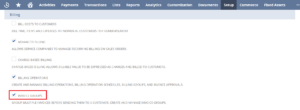Invoicing should not be a cumbersome task, even for businesses dealing with a large number of transactions or managing multiple subsidiaries. Keeping track of individual invoices, payments, and reconciliations should not be a headache. NetSuite Group Invoicing is a useful feature, offering a comprehensive solution to streamline your invoicing process. In this blog post, we’ll explore what NetSuite Group Invoicing is, its benefits, and how it can improve your business operations.
Understanding NetSuite Group Invoicing
NetSuite Group Invoicing is a powerful feature within the NetSuite Enterprise Resource Planning (ERP) suite featured in its 2020.2 release. Designed to simplify the invoicing process for companies with complex billing structures, It allows businesses to consolidate multiple invoices into a single grouped invoice. Invoice grouping does not create a transaction for posting, it works by merging multiple sales orders into 1 invoice.

Benefits of NetSuite Group Invoicing
- Allows for the grouping of multiple sales orders into a single invoice making processing easier for your AR team and customers. This can work particularly well where a subscription is being paid by a client on behalf of a number of subscribers where the transactions are coming into NetSuite as individual Sales Orders.
- Allocate your receipts to a group invoice saving time for your AR team when performing cash allocations who will not need to allocate cash to individual invoices.
- Group invoicing will help to improve cash flow by reducing the chances of missed invoices, making settlement easier for clients, and making it easier for credit control to chase individual invoices.
Setting up Group Invoicing
- Enable group invoicing by going to Setup > Company > Enable Features. Click the Transaction Subtab. Billing and select invoice Groups.
- Invoiced Grouping needs to be enabled for each customer that you want to raise group invoices for. Go to the Customer Record and under financial tick the group invoices box.
- When creating an invoice from a sales order, make sure the group invoices box on the sales order record is selected.
- Once you create the invoices to be grouped go to Transactions > Sales > Group. Select the invoices you want to group and hit submit.
- Go to Transactions > Sales > Group Invoices > List to review and access Group Invoices Created.
Group Invoicing Limitations
- The Invoice Group feature does not support custom addresses. This means you must take the address from the entity or customer record.

- Invoice grouping is done under a default subsidiary. This means that your pdf may need customisation to show the subsidiary address that the invoice is from.
- Users will still need to create individual invoices to group. The process would be quicker if the user could group multiple sales orders into 1 invoice in the first instance.

- If there is an issue with an invoice address for example, you will need to redo all invoices in the group.
- Grouped invoices need to have the same customer, terms, currency, billing address and subsidiary.

In conclusion, NetSuite Group Invoicing is a powerful tool that can significantly streamline your invoicing process, leading to improved efficiency, accuracy, and customer satisfaction. It is easy to configure as the functionality is custom-built in NetSuite. Once you create your group invoice PDF you will be ready to go.
If you think your business would benefit from group invoicing, get in touch today for a free consultation.
